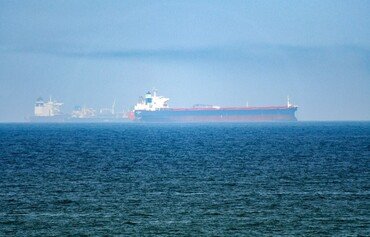The US military on Thursday (July 18th) shot down an Iranian drone that it said came within 1,000 yards (914 metres) of one of its naval vessels at the entrance to the strategic Strait of Hormuz.
The USS Boxer, an amphibious assault ship, "took defensive action" against the Iranian drone as it was "threatening the safety of the ship and the ship's crew", US President Donald Trump said Thursday.
"The drone was immediately destroyed," he said.
The downing of the drone comes at a time of mounting tensions in the Gulf between the US and Iran, which has been slapped with a raft of US sanctions.
![A man watches ships on July 2nd in the port of Fujairah in the east of the UAE, where recent tensions between Iran and the US have affected movement in the Gulf of Oman, near the Strait of Hormuz. [Karim Sahib/AFP]](/cnmi_am/images/2019/07/19/19082-Fujairah-Emirates-ship-600_384.jpg)
A man watches ships on July 2nd in the port of Fujairah in the east of the UAE, where recent tensions between Iran and the US have affected movement in the Gulf of Oman, near the Strait of Hormuz. [Karim Sahib/AFP]
"This is the latest of many provocative and hostile actions by Iran, against vessels operating in international waters," Trump said.
"The US reserves the right to defend our personnel, our facilities, and interests and calls upon all nations to condemn Iran's attempts to disrupt freedom of navigation and global commerce," he said.
"I also call on other nations to protect their ships as they go through the Strait and to work with us in the future," Trump added.
Iran on Friday denied the incident, saying all such aircraft had "safely returned" to their bases, Tasnim news agency reported.
First US military action
Tensions in the Gulf mounted Friday in the aftermath of the incident, which is the first US military engagement with Iran following a series of increasingly serious incidents.
The confrontation came as Iran defended its detention on Sunday of a "foreign tanker" believed to be the Panamanian-flagged vessel Riah and its 12 crew.
The incident comes after a series of low-level attacks in the region blamed on Iranian forces, including placing limpet mines on several tankers, as well as attacks by Iranian proxies in Syria and Yemen.
In May, the Pentagon announced the deployment of an aircraft carrier strike group and a bomber task force to waters near Iran in response to "indications of a credible threat by Iranian regime forces".
Iran downed a US surveillance drone in June, prompting Trump to order airstrikes against Iran. But he called them off at the last minute, saying the plan was not "proportionate" and casualties would have been too high.
On July 4th, Britain seized a fully loaded Iranian oil tanker near Gibraltar, allegedly headed for Syria in violation of sanctions.
One week later, armed Iranian boats menaced a British tanker in the Gulf before they were driven off by a Royal Navy frigate.
That led to US calls for an international flotilla to escort hydrocarbon-laden vessels from Gulf oil fields through the Strait of Hormuz.
US Central Command chief Kenneth McKenzie pledged Thursday to work "aggressively" with partners to ensure freedom of navigation in Gulf waters.

![The US military displays what it says is an Iranian Sayyad-2 surface-to-air missile system drone at a military base in Washington on November 29th, 2018. [Thomas Watkins/AFP]](/cnmi_am/images/2019/07/19/19081-Iran-drone-DC-600_384.jpg)





